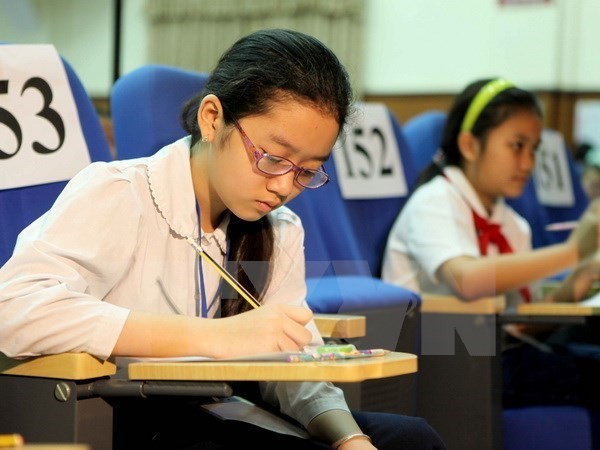(VOVWORLD) - Vietnam ranks first among Southeast Asian countries in terms of primary school student learning outcomes under the Southeast Asia Primary Learning Metrics (SEA-PLM) programme.
 Illustrative image (Photo: VNA) Illustrative image (Photo: VNA) |
The results of the SEA-PLM in 2019 were announced at an online conference of the Southeast Asian Ministers of Education Organization (SEAMEO) on Tuesday.
Among the six participating countries - Vietnam, Laos, Cambodia, Malaysia, Myanmar and the Philippines - primary school students in Vietnam ranked first in all three competencies surveyed, namely Reading, Writing, and Mathematics.
Specifically, in the Reading domain, Vietnamese students showed the highest average competency level of 6/6. The percentage of Vietnamese students achieving the sixth level of competency is 82 percent. Malaysia ranked second with 58 percent of students achieving the sixth level. The percentages of the remainder were all below 10 percent.
In terms of Writing, Vietnamese students had an average capacity of 6 out of 8. The percentage of students reaching the eighth proficiency level was 20 percent. This rate in the remaining countries was 2 - 4 percent.
In Mathematics, Vietnamese students had an average competency level of 8 out of 9. The percentage of children with the highest level of competency (level 9) was 42 percent. The rates among the remainder were all below 10 percent.
The learning gap between urban and rural students as assessed by SEA-PLM has narrowed, with almost no difference remaining. However, students in mountainous and remote areas are still lagging far behind students from other regions.
In 2019, the survey was conducted at 150 schools in Vietnam with 832 teachers, 4,837 students and 4,160 parents taking part.
Launched in 2011, the SEA-PLM aims at assisting SEAMEO member countries to better measure and understand the learning situation of primary students according to both general and individual criteria, thereby helping countries improve the quality of their education system.